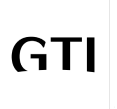Online, as elsewhere, your brand is its own entity. In line with this, your content is its voice, hence the importance of a good content strategy. In the age of web and social media, everything is permanent. All the more reason to avoid missteps and offer a well thought-out presence that reflects your brand image. Moreover, all good communication starts with a great content strategy!
Let’s go through these 6 steps. They’re a great starting point:
- Marketing Objectives
- Target Audience
- Content Types
- Implementation Plan
- Promotion
- Measurement
Step 1: Content Marketing Objectives – Get to Know Yourself First
To design your business’ content strategy, a little (read BIG) reflection is needed and probably a lot of research as well. Brand personality, mission, values and sales cycle are all important considerations to build a solid content strategy. It seeks to define the tone and voice that fits your brand best and especially to define the communication objectives. It is important to align these goals with your business objectives. It will help sell the idea to your managers and measure the results more easily (see step 6).
Examples of specific objectives:
- Brand awareness and brand building
- Conversion of prospects and commitment
- Customer Conversion
- Customer service
- Loyalty and Retention
- Cross-selling, Upsell
Step 2: Target Your Audience
Now that we better understand our brand, we’re ready to talk, but it would be even better to also be heard. The objective of the second step is to specify our target, the content they like and influencers they follow to be able to properly adapt our message.
It’s at this stage that personas become useful. They help us imagine our typical customers and give them distinctive characteristics (personality, age, use of technology, use of our product or service, etc.). Let’s take Julie for example. She is 45 and CEO of her company. At work, she’s regularly connected on social networks and various blogs of her industry. With a very busy schedule, she prefers to shop and research products online to maximize her lunch break. With Julie, we go straight to the point, target platforms she’s already on and keep our message concise.
Step 3: Define Content Types -What Are We Talking About?
We know our company and we know our target. Perfect. Now we can talk. But before, let’s plan some topics, to better prepare our meeting. Depending on the objective and the interest of your target, choose different formats and content topics.
For example, MultipleMedia’s target is interested in web and digital services, but it has a somewhat variable level of knowledge from the Marketing Manager to the IT Director. A more generic research article therefore attracts a different clientele than a sharper case study, which requires a thorough understanding of the topic being discussed.
At MultipleMedia, our content is divided into 3 depending on the level of complexity and the user route. The first type is quite generic and rather informative. It describes an achievement or a new client mandate in a way that’s easy to understand by putting forward the perceived benefits or presenting a list of events not to be missed this season. The second is for the user in the exploratory phase. He may not know all the basics of SEO, but he knows he has a problem with his bounce rate. In the third, we reach more informed customers seeking specific expertise. Someone asking about Bootstrap 4 migration or looking to explore dashboards and automated reports.
Some examples of formats:
- Video Tutorials
- Webinars
- Product Demos
- Case studies
- White papers, guides, toolkits
- Publications on professional blogs
- Opinion leader and major publications content
- Guest posting
- Popular content
- Targeted Ads on Social Media
- Contests
- Newsletter
Step 4: The Game Plan
Once we have properly structured our ideas and clearly defined our target, we must plan the creation and publication of this beautiful content. Easier said than done? Do not panic, start with a calendar.
In determining the quantity of content per category, topics and their frequency of publication, you will be able to plan everything. Include your team in the process of generating ideas. Consider conducting keyword research and analyzing your competitors’ content to find out what performs well. Project management tools (Wrike) or more specific tools in content management (Hootsuite) will allow all stakeholders to access your editorial calendar and know when they will be involved. You can also start with a shared Google Drive file where you can include the following information.
Step 5: Promote your content – free, shared and paid
So, the content has finally been created. Congratulations. But don’t believe it’s over yet: it’s promotion time. You have already analyzed the best place to reach Julie (step 2) depending on the type of content she reads (step 3), now let’s test the budget, frequency or duration required to fully get in touch with her. While some content is distributed without promotion (newsletter, website or company blog), social media is something else!
Step 6 spoiler alert: the best advice to promote on social networks is to test, test and test again!
Type of content, time of publication, frequency or campaign duration, you will have several elements to test to ensure optimal performance. Try different variations by focusing on one item at a time and take notes on each result.
Step 6: Measure results – It gets better with time.
Does it seem over? We are almost there. To make sure this wasn’t all for nothing, take the time to analyze the results. Try using different tools: Hootsuite for social networks, Google Analytics for your website’s data and a CRM for leads and sales.
Which content performed best? Which platform reached the most engaged target? How to optimize your next content? Establish a testing frequency for each campaign and ask yourself the right questions.
That’s it. Your game plan is ready! Give it some time, it will get easier with practice.
Bonus: Some content marketing principles
3, 33, 333: a question of attention
The average human has an 8-second attention span. This is one second less than a goldfish. This is also the time to engage your customer before he thinks of something else.
Remember to write different content depending on your users’ level of interest.
- A title or a persuasive call to action (3 seconds)
- A short paragraph or bullet points (33 seconds)
- An article or descriptive one-pager (333 seconds)
Clear, consistent and concise: the 3 C’s of content
A buyer conducts about 12 searches before landing on a specific brand’s site. Quite a clear illustration of the principle, right? In other words, your content must respond clearly, effectively and quickly to your users’ questions. Here are 4 you should answer before publishing your content:
- Is this content asset using language used daily by professionals in your target market?
- Is this content asset tailored specifically to one of your identified personas (remember Julie)?
- Is the value prop messaging used in this asset consistent with other content assets?
- Does this asset drive someone deeper into the buyer’s journey?
Other key elements to keep in mind
Think SEO and write content that will rank high on search engines. Maximize the life of your content by choosing subjects that persist in searches.
Well, now that you know it all, go ahead, try it out, and get back us! We are passionated professionals from a passionated digital agency.



